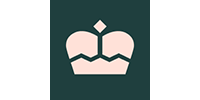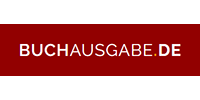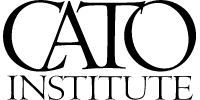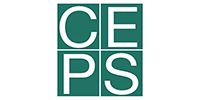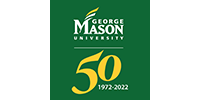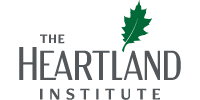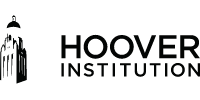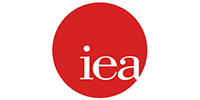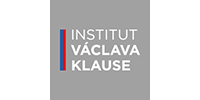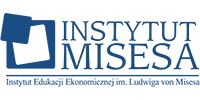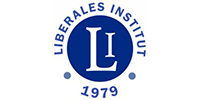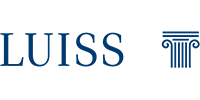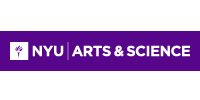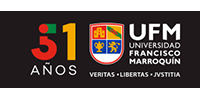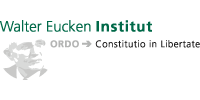On the decentralization of an education system.
Argentina as a case in point
Abstract
Argentina has exported very few positive news in the last century, if any. Headlines at the international press would every now and then point to a new economic crisis, high inflation, devaluation of the currency and political turmoil. Although a middle-income country, it used to be among the top countries at the start of the XXth Century. Such successful performance tempted thousands of immigrants who prospered well beyond what happened in other Latin American countries. It offered them a well-structured educational system who opened opportunities for many.
But then it got the populist disease, the opportunities dried up, the educational system followed a similar path, and Argentina started to lose ground. Argentines, tired of many failures, decided to vote for someone who offered drastic change towards the same principles that were successful a century before. How does it reflect in the field of education?
The present paper intends to describe the situation at this time and the steps the new government is taking, and how education has already changed the Argentine society in one sense, and it is expected now to change the educational system towards a more open and decentralized system.
———————————-
The debate about the future of education is intense, all over the world, and Argentina has become a focus of attention, considering the potential reforms that may come in the next years. A new government has announced drastic pro-market reforms in all areas with the expected turmoil and resistance. The proposed changes, announced with clarity during the campaign by now President Javier Milei, have sparked a wave of reactions from organized groups and opposition politicians. Regarding education, the announced reforms are not that drastic, but they are nonetheless disputed. It is the goal of this article to present the basic ideas behind the proposals of the new government, their vision for the future of education in Argentina, and the path it is expected to follow.
While introducing the potential changes that may come about, we will be raising some points of debate that can be found all over. These conceptual issues are, of course, more important than the specific circumstances present in Argentina, and it is to be hoped they will raise an interesting discussion on the topics.
Three liberties
A century ago, Argentina was an example in education for all Latin America, not without its faults though. Back in the second half of the XIX Century positivist liberal governments moulded an educational system following the experiences of the United States and European countries. In a young, and limited, democracy, the ‘sovereign’ had to be educated, although universal voting was still many years away. A second concern for the country’s leadership was the integration of a massive arrival of immigrants, many of whom did not even speak Spanish, at a time they were concerned with building an Argentine culture. The educational system was the instrument to do it, and the government invested heavily in building schools and bringing teachers from abroad. It was not only concerned with achieving high levels of reading and writing but also with creating a nation.
Private schools did exist before this and were allowed to continue but all students had to take an exam at a public school at the end of the year. The contents of education at government schools and, therefore, at the exams they took, were established by law. Primary school was mandatory and free, which is the essence of the system then created. Teachers also had to graduate from national or provincial secondary schools and foreign teachers had to validate their diplomas.
In short, the government imposed mandatory primary education, built free schools, regulated conditions to teach, set the courses to be given and authorized private schools which were basically the same as government ones.
And it did work. In 1870, 78% of the population was illiterate, falling to 7% one century later. A great achievement but with the seeds of failure. As could be expected, the command-and-control system was taken over by populist demagogues, government bureaucracies and teachers’ unions, and the mandatory contents became an indoctrination system. It was not that bad at the beginning when a few enlightened leaders led the country to become an incredible success story with high rates of economic growth and development, but starting in the 1930s chauvinism and statism prevailed, particularly with Peron since 1945, and following one economic crisis after another both wealth and education declined steadily in one of the few cases of a country in its way to underdevelopment.
Positivist or constructivist liberalism had probably good intentions, but it created instruments that once in the hand of others would turn the educational system into a field of privileges for union leaders and government bureaucrats. The results are there to look at: according to ERCE 2019 tests 46% of children in a third grade cannot read, and when they reach sixth grade 68% have a limited ability. In math 87% does not achieve a minimum when in sixth grade.
The main problem, though, is not that the system is not working as expected, but that any mandatory and compulsory system ends up being an indoctrination system, with the government trying to “homogenize” students imposing certain contents. In this case, just taking a brief look at what are called “Núcleos de Aprendizaje Prioritarios” (NAPs)[2] in the areas of Ethics and Citizens’ Formation or in Social Sciences it can be clearly seen that they were approved in peak time of the Kirchner’s mandates, and they look for educating young militants, who get a view that society is conflict, and improvements may only come through struggle, manifesting in streets. There is no word on the voluntary social cooperation the market produces allowing each of us to pursue any goals that we may want to reach, multiplying the quantity and the quality of opportunities for those who are willing to study and prepare themselves.
Freedom in education
Freedom in education can be considered in three ways, as three different freedoms. There might be more, of course, but we will here concentrate on this smaller framework.
The first freedom in education, therefore, refers to the contents. Students and families, exercising such freedom, should be able to freely choose the kind of education they want for themselves and their children.
The second freedom refers to methodologies. It is somewhat arrogant to think that someone knows what is better in each case. As in other subjects, pedagogues do not have a common vision and there are profound and serious discussions on the merits and deficiencies of each of them. Freedom will open the field to different methods, multiplied today by the advance in new technologies. Only in an open and decentralized environment will we be able to discern those that work best or not; and these last will have a chance to learn from those that succeeded. Only with diversity will the beneficiaries, not the bureaucrats, choose what they consider best.
The third freedom refers to the supply of educational services. Particularly, the poor are trapped into the government school system with no chance to choose, in many cases not even among different governmental schools. Nor can they know the result of evaluations and tests because they supposedly open the door to discrimination, the present legal framework sets.[3] Precisely if they had the information families could “discriminate” between good and bad schools, choosing the first and putting pressure to improve on the second.
Federalism
A second point to consider any scenario to move in the direction of the tree liberties mentioned above is that Argentina is a federal country which is reflected in the educational system in the following way:
- Government primary and secondary schools are owned and managed by the provincial governments.
- Private primary and secondary schools are regulated and supervised by the same.
- There are a few provincial government universities (4), most of them are owned by the national government (55) though run in an autonomous way.
- A common minimum curriculum for primary and secondary schools is defined by a Federal Council formed by the ministers of all provinces and the national government, but the provinces can after that incorporate their own more specific contents and are also in charge of verifying compliance.
As far as freedom of contents is concerned there are three possible ways to move in that direction: the first is a change in the National Education Law eliminating minimum content, the second to empower provincial governments to define them, the third to call the Federal Council to consider them and change them. Neither of these is an easy way to go. To eliminate minimum contents would face a strong opposition from political parties and the educational establishment who believe it is a government responsibility to build a common culture or a general starting point for all students. The result of this is a homogeneous process which does not give much choice to families, except that private schools, for those who can afford them, may offer additional contents, better services (gym installations and equipment; computer labs) or language (basically English) but they do not have much room left to include additional contents since they have barely time enough to comply with the mandatory ones.
A market education would also offer some general common contents since that would be the demand of customers. Basic knowledge of reading, writing, math, and history, for example, would be a basic requirement from any family.
Would culture also be a homogeneous demand? One can respond in the affirmative in the case of Argentina, a large country with a strong local culture.
Nevertheless, the question is still open with relation to the inflow and integration of immigrants, a question that is of great concern in Europe or the US. The fact is that Argentina is a place of immigrants who, at the start of the XXth Century, came basically from Europe but also from the Middle East (Lebanese and Syrian). It could be argued that the educational system then developed worked in a way to favour the ‘melting pot’ but this was going on anyway in neighbourhoods or industries and trade. A quite typical culture was then developed spontaneously (tango music, football fans’ passion and a cult of friendship being some of the characteristics).
The incoming Italians, Spaniards, Lebanese, or Germans accommodated to the local environment and the next generation already grew speaking the Spanish language and becoming part of this mixed society. Not only that, but they also built a great number of organizations based on their origins such as friendly societies, clubs, and hospitals. Just walking around Buenos Aires one can still find the British. German, Italian hospitals still with their names, although they now cater to a general audience. And if you look at the sports’ clubs there still are the Buenos Aires Rowing Club, the Canottieri Italini, the Teutonia, or the Hispanic Club just in the rowing area. Football shows clubs with names such as River Plate, Boca Juniors, Newell’s Old Boys, or All Boys, with fans who most probably do not know where the name comes from.
At present, there is also an inflow of immigrants (also an outflow of young professionals back to Europe because of the recurrent economic crisis) but they come from neighbouring countries and Venezuela or Russia, the first to take some opportunities still left and the last to run away from the chavista regime or the war with Ukraine.
Populism in education
As mentioned, the mandatory system of education was already in place when populism arrived with Perón back in 1945. His regime made use and abuse of the system indoctrinating young students on the benefits of “peronismo”. Although the Peronist regime eventually fell, the educational system did not change its essence, though it became somewhat less ideological. Teachers’ unions grew ever strongly and became the most powerful interest group in the field. The other actors were the government, but these were changing either through democratic elections or coups d ‘état, and families, who were dispersed and not organized. The teacher’s unions played strongly, political leaders avoided confrontation with them, and parents were not part of any consideration. Populism allied with the unions, and regulated education in their favour under the guise of “social conquers” for teachers, taking advantage of the high consideration public education had towards it.
Populism does not have a specific ideology. During the 1990s the Peronist government followed an international wave of public opinion towards market reforms and privatizations, one that ran throughout Latin America. With the new century things changed and left-wing populism became the norm: Hugo Chávez in Venezuela, Lula da Silva in Brazil, and Néstor Kirchner and Cristina Kirchner in Argentina.
This left-wing populism took hold of the educational system and renewed all basic and mandatory contents. They fell into what is called “woke” culture with a vengeance. Students at an early age of primary school are taught that life in society is all about conflict and that collective rights (there is no mention to individual rights) are won in the street, in a struggle against the powers that be. Already in second grade (7 years old) the content includes “the public exertion of the word and the recognition of the social effects in verbal and written expression, participation in meetings and rallies, participation in assemblies, writing of requests and letters, among others”.
In the subject of Social Sciences (students ten years of age) they will be considering “analysis in the form of resistance, like the recognition and/or defence of dignity, generated by subordinated groups -people in poverty situations, immigrants and other excluded groups- facing different forms of prejudice, maltreatment and/or discrimination.”
At secondary school the bias goes deeper, and students are taught that we live in world of injustices based in social differences, of income, gender, culture, and others. These are the main barriers for progress. There is no reference to other groups that may also be discriminated like small and medium sized companies crushed by taxes and regulations, or the difficulties youngsters face to get into the formal labour market, or the population at large being deprived of a no small part of their income through inflation. Recommended cases to consider are “discrimination and genocide of indigenous groups, the Armenian people, the Apartheid, The Holocaust, Hiroshima and Nagasaki, among others”. But no reference is made to the millions who were killed under Stalin or in Mao’s China, the Holodomor, Pol Pot’s Cambodia, or North Korea.
It is also relevant what is not included in the issues to be considered. For example, there is no mention of corruption in government and as far as economics is concerned there is also no mention of demand and supply, prices etc. Markets are not considered but in the course in Economics they are taught about power relations, asymmetries between countries and domination. In the history of Latin America, it is relevant “understanding of the political, ideological and cultural impact of the Cuban Revolution…”.
As mentioned, the provinces agreed on these contents at the Federal Council, and they are committed to include them in their more specific regulation of contents that each province enforces. This means there are differences, but all of them have committed to include the contents we have commented.
Effective control is another matter. Inspectors from these governments regularly visit the schools to check for compliance. Teachers must fill into a register book the contents of every class. Inspectors check if they do it, but once in the classroom, the teacher is not controlled and may express his/her own views on the subjects. The inspector could check contents in the students’ notebooks, but they hardly do it. The incentives for these government employees tend to be weak, and these gives some latitude to teachers, who can either deepen the view of the contents or revert it, although they themselves are trained in them.
But the fact that a disastrous policy is only relatively applied does not diminish its damage. This opens an interesting question: in the face of a policy like this, or any other as negative, is it better if it is wrongly applied? In this case it brings some leeway in the class, some autonomy and diversity, but it does not change the character of an indoctrination system, present at every level, from young students to the education of teachers.
Freedom to choose contents would empower families, not the government, to decide what is best for their children. Parents will have more or less knowledge in the matter, but nobody will have the affection and dedication they can give. Besides, there are a great number of organizations helping in these decisions, from churches to foundations. Parents also share information on schools and teachers, and an open evaluation of schools and teachers would increase their capacity to make reasonable decisions.
Freedom to choose an education is decentralization, diversity, to fulfil the preferences of each individual or family.
Freedom to choose an education is decentralization, diversity, to fulfil the preferences of each individual or family. If they are not allowed to make choices, how are they going to learn to make decisions? That is also an important part of education. Freedom to choose also educates.
A long and winding road
Argentina is in the spotlight as the first country with a libertarian elected president. There is much expectation about the road the new government will take, although it was clearly presented to voters during the campaign in 2023. According to Milei, reforms will be deployed in three stages, which he called “generations”.
The first generation of policies has to do with fiscal and monetary reforms. Argentina had a fiscal deficit every year since 1960, except for six years. In 2023 the fiscal deficit was 2.7% of GDP, going to 6% of GDP if we consider interest on public debt[4]. Closing this gap has been announced as a priority for the new government and it is what it has been doing since inauguration with drastic cuts in expenditures, allowing it to close the gap in both the operations and financial accounts. In the meantime, the Central Bank is cleaning up its balance which had negative reserves by 11,1 billion dollars in December 2023.
The second generation of policies has to do with reform of the government structure, reduction of ministries and secretaries (already done), privatization of state-owned companies and deregulation. The government has issued an emergency decree with some of these reforms which is active unless the two houses of Congress reject it, and it sent an omnibus bill to the House. The decree was rejected by the Senate, and it has now moved to the House. If the House does not reject it, as the government expects, it will stand and some deregulation reforms, like the free choice of health insurance by workers or open skies for local flights. Nevertheless, some of these reforms will eventually be challenged in courts. The omnibus bill had a first positive vote in the House but then it blocked in the debate of each article until the government decided to stop the legislative procedure until a consensus around the reforms is achieved.
Resistance to chances has been fierce, with every interest group and lobby playing hard to defend their privileges, particularly through judicial action. In the meantime, since the decree is active until it is rejected, some of their changes have been showing their expected results. As an example, rentals were controlled or frozen by government regulation, which led to the expected shortage in the marketplace. The market had an immediate reaction to the elimination of controls and the legalization of contracts in a currency of their choice (usually US dollars) and the supply started to grow immediately.
Education and health are part of the third generation of reforms. In the meantime, the government has started cleaning up corruption in governmental programs. The Kirchner’s government had implemented a great number of social programs and coopted social organizations to manage them. That is, the government would send funds to any such organization, and they would oversee assigning the social plans to whoever they thought may need it or deserve it. No wonder, this policy created two powerful effects: on the one had it turned all recipients into dependents of the organization and had to follow their commands, particularly to stage rallies closing streets in downtown Buenos Aires to claim for more funding; on the other it sparked corruption, with some leaders of these organization taking government positions and channeling governmental funds to their own organizations. The new government is now bringing this up to light and starting legal demands against the leaders. It aims to change social programs by eliminating any intermediaries making direct transfers to those who qualify for social aid.
In the field of education, the first step was to declare education as an “essential” service. This means there are some restrictions on what workers and unions can do, and they must guarantee some basic services, like having public schools open to receive students and a minimum coverage of 80% of teachers. This was a priority because the government was inaugurated in December 2023 and classes started nationwide in March 2024. It used to be the case that every year, with the start of the term, unions would stage strikes to put pressure on the provincial and national governments to attend to their claims. There were cases in the past where students in a province might lose as much as two or three months of classes. So far, the educational term has started without major problems.
Other reforms going into the omnibus bill emphasize training and evaluation of teachers.
- They will be regularly trained and evaluated. The conditions of these evaluations will no longer be consulted with the unions that exerted a fundamental pressure on them. Teachers will be having an exam every five years.
- All students will be tested in math and reading comprehension and there will be an exam at the end of secondary school. Students will receive a certificate. The ban on publishing results will be lifted, and only the names of students will be protected, something that included teachers and schools in the past. Results were given only to the respective schools and a comparative reference of another school, but teachers, parents and students would not have information about the performance in their schools. The argument for this was to avoid discrimination.
- Distance learning was only allowed for adults. If the reform is approved it will now be possible from the second cycle in primary school, allowing “home schooling”.
- It reaffirms that provinces oversee primary and secondary schools and, therefore, are the ones who will be deciding on teachers’ salaries and working conditions.
- It keeps national states universities free for all local students and foreign residents, but it now allows them to charge tuition to others. It allows the Secretary of Education to negotiate agreements with other foreign states and institutions to share the costs.
- Presently, admission at national state universities is free, although candidates must have a course on some basic subjects. They will now be allowed to take an admission exam and students will have a choice of an admission course or a direct exam.
- Universities (government and private) must make a self-evaluation every six years, a period now extended to ten years, and universities can avoid doing it with the governmental evaluation agency and can do it themselves with experts from other universities.
- The budget for government universities was supposedly assigned with reference to some variables but it was mostly a matter of political lobbying. It will be now determined by the number of students, the degree they are trying to achieve, and the number of graduates.
- Most schools, government and private, had a group of parents helping them to raise some funds through donations but schools could not let anyone know who was donating, to avoid them being used as advertising. The restriction would be lifted.
As mentioned, the consideration of the omnibus bill has been removed from the floor of the House and the government will have to decide to send it back again or to send separate bills.
Reaction against these proposals have been varied. Some groups promoting “alternative” education have been critical on the reduction of the role of government in education at the same time they are active requesting more freedom in methodologies and contents[5], others are supportive in general[6] or reject the reforms completely along ideological lines. The organization of private schools, with more than 6,000 members is openly backing the changes[7]
Vouchers
In the meantime, though, the government has launched a voucher program for parents sending their children to private schools. At present, private schools may receive a subsidy that goes as far as 100% of the salaries for teachers, but depending on the tuition they are charging. The higher the tuition the less the subsidy to reach one point when there is none.
The government has just announced a program consisting of a voucher[8] for parents who send their children to subsidized private schools (many of them run by the Catholic Church) at all levels (initial, primary, and secondary) and receive now more than 75% of subsidy. Tuition should not be over a certain ceiling and the voucher will cover 50% of the tuition cost. Just in the areas of Buenos Aires city government and Buenos Aires province the benefit could go to as much as 940,000 students.
Other than that, voucher programs covering all schools, government and private, depend on the willingness of provincial governments, who ran primary and secondary government schools. So far, none of them has announced such a reform and the national government is waiting for at least one of them to be willing to test the idea.
It could, eventually, consider a voucher program for students at all government universities, but in a way, they are like the provinces, they have autonomy in managing their budget. As university students are more politically active, it seems the government is not considering opening a new area of confrontation currently.
Education and ideas
So far, we have been considering reforms in Argentina’s education system, but the concept of education goes much beyond that. Young students are educated at schools and universities but those are not the only ways through which we get educated. We also feed ourselves from what we get in our families, our friends, neighbors, churches, clubs, the media, and the Internet.
That kind of education is as important as what we get at schools. This brings up an interesting question: ¿does the educational system reflect the ideas and values that prevail in society, or does it mold them? Argentina has been going through an intense process of change in the field of ideas and President Milei has performed a substantial role in that regard. It usually said he has been engaged in a “battle” of ideas. The metaphor is clear, but it probably does not describe the world of ideas as it really is. In a battle we have two sides opposing each other and many times one prevails over the other. Probably a more acute metaphor would be to describe this world as market for ideas, where we have entrepreneurs not generals.
The market for ideas has been descripted with different metaphors: in one of them as raindrops falling in a pond, in another as a pyramid. The quietness of a pond is disturbed by raindrops that create widening circles, some larger, some smaller. The small waves reach others and merge or distort their form into something new. There are powerful ideas, or drops, that create wide circles of acceptance, while others only small ones and die rapidly or are taken over by larger ones. The metaphor is good to show a competitive place but, again, drops just fall without any entrepreneurial agency. The metaphor of a pyramid shows ideas created at the top, by an individual or small group, and then moving down reaching larger audiences until they get to the bottom. It is a tiered market[9], or one composed of different submarkets, each with its own features. Those at the top are Schumpeterian entrepreneurs who, through their creative destruction, turn other ideas or narratives obsolete as they spread downwards. The move from one tier to another is propelled by Kirznerian entrepreneurs who are alert to find opportunities among ideas that may have a larger audience in other stages. Those at the top are part of an elite, although not necessarily a scientific or academic one.
Precisely, a relatively small number of “entrepreneurs of ideas” in Argentina, including President Milei of course, aggressively competed presenting classical liberal and libertarian ideas in newspapers, radio, TV and all sorts of information networks at the web and “educated” a good number of Argentines, particularly young ones. And they did it successfully with youngsters who did not see any desirable future Argentina was offering and, instead of following a rebel disposition by joining left wing parties and organizations, they became freedom lovers instead. This was an amazing process of “education”, particularly considering that all of them went through the biased educational system described above.
And it also brings to the table an interesting theoretical issue: ideas comply with the two requisites of what economists call “public goods”; that is, no exclusion and no rivalry in consumption. As such, mainstream theory would forecast a market failure and the need of government supply, but what we have seen in this case is a market provision of that public good.
Conclusion
Argentina is going through an intense process of change. It was first an informal process of educating in the ideas of freedom and now it is starting to move to change the formal system of education. This process would not be possible without the first and even here the process is slow, awaiting its time after the more drastic and needed economic reforms are implemented and the fiscal and monetary situation is stable. In the meantime, reforms in the field of education have the purpose of removing some barriers and bringing up information to students, teachers, and parents about the outcomes the system is delivering. Structural reforms lie ahead but the path is now open, and the government has started to follow it.
Martin Krause is Consulting professor of Economics, University of Buenos Aires;
Member of the Board, Mont Pelerin Society; Adjunt Scholar, Cato Institute;
Academic Board, Fundación Libertad y Progreso, Buenos Aires.
[2] https://www.educ.ar/recursos/150199/coleccion-ncleos-de-aprendizajes-prioritarios-nap
[3] An article in the present Law of National Education forbids the diffusion of results at the level of schools, teachers, and students.
[4] IARAF (2023); Informe económico: https://www.iaraf.org/index.php/informes-economicos/area-fiscal/547-informe-economico-2024-01-22#:~:text=El%20a%C3%B1o%202023%20cerr%C3%B3%20con,a%20igual%20mes%20de%202022.
[5] https://alteredu.com.ar/redes-de-educacion-alternativa-dnu-y-ley-omnibus-defendemos-la-educacion-publica-gratuita-a-la-par-que-seguimos-impulsando-la-educacion-de-gestion-social-y-la-libertad-de-aprendizajes/
[6] https://docentesxlaeducacion.blogspot.com/2024/01/docentes-por-la-educacion-diputados.html?m=1
[7] “The educational system is very corporative, endogamic, with strong resistance to change. This law is giving us a fundamental tool for continuous evaluation. The day other social actors such as families and society at large start learning the results of the evaluation of teachers and schools, they will start asking questions. And they are welcomed; the need to answer them will lower resistance to change. The sole existence of evaluations at all areas and levels is welcomed, not just pedagogically, but as a message to the whole educational system”; https://alteredu.com.ar/escuelas-privadas-y-ley-omnibus-el-sistema-es-muy-endogamico-y-resistente-al-cambio-bienvenido-este-aggiornamiento-que-propone-el-poder-ejecutivo/
[8] https://openknowledge.worldbank.org/server/api/core/bitstreams/79cc9b90-66fc-40f2-bb17-5377abb459b6/content
[9] The downward order could be related to Acemoglu & Robinson (2012), who posit the prevalence, both in time and importance, of political institutions over market institutions, which in this case determine incentives.
Bibliography
Acemoglu, Daron & James A. Robinson (2012); Why Nations Fail: the origins of power, prosperity and property; (New York: Crown Business).
Alesina, Alberto & Paola Giuliano (2013); “Culture and institutions”; NBER Working Paper Series; WP 19750 (Cambridge, Mass: National Bureau of Economic Research).
Coase, R. H. (1994); “The Market for Goods and the Market for Ideas”. In Essays on Economics and Economists, pp. 64-74. (Chicago: University of Chicago Press).
Dicey, A. V. (1917); Lectures on the Relation between Law & Public Opinion in England during the Nineteenth Century; (London: Macmilland and Co. Ltd.)
Friedman, Milton & Rose (1988); “The Tide in the Affairs of Men”; in Annelise Anderson and Dennis L. Bark (eds) Thinking About America: The United States in the 1990s (Stanford, CA: Hoover Institution Press. Reproduced at: https://fee.org/articles/the-tide-in-the-affairs-of-men/
Hayek, Friedrich A. (1933); “The Trend of Economic Thinking”; Economica No. 40: 121-37.
Hayek, F. A. (1949); “The Intellectuals and Socialism,” University of Chicago Law Review: Vol. 16 : Iss. 3 , Article 7. Available at: https://chicagounbound.uchicago.edu/uclrev/vol16/iss3/7
Leighton, Wayne A. & Edward J. López (2013); Madmen, Intellectuals, and Academic Scribblers: The Economic Engine of Political Change; (Stanford: CA: Stanford Economics and FInance).
Niskanen Jr., William A. (1971), “Bureaucracy and Representative Government”, (Chicago, Aldine-Atherton.)
Sowell, Thomas (2009); Intellectuals and Society; (New York: Basic Books).

